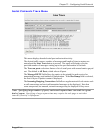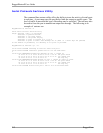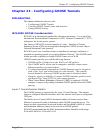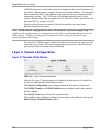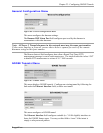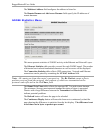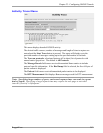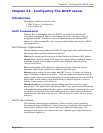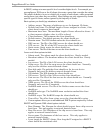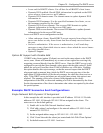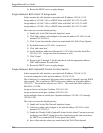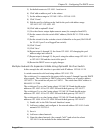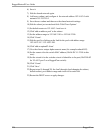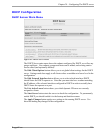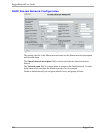
Chapter 24 - Configuring The DHCP server
Chapter 24 - Configuring The DHCP server
Introduction
This chapter familiarizes the user with:
• DHCP Server Configuration
• Use of Option 82
DHCP Fundamentals
Dynamic Host Configuration Protocol (DHCP) is a method for centrally and
consistently managing IP addresses and settings for clients, offering a variety of
assignment methods. IP addresses can be assigned based on the Ethernet MAC
address of a client, sequentially, or by using port identification provided by a DHCP
relay agent device.
DHCP Network Organizations
The information to assign addresses in DHCP is organized to deal with clients at the
host, group, subnet, pool and shared network level.
Hosts entries assign specific settings to a client based on its Ethernet MAC address.
Groups allow identical settings to be created for a group of hosts, making it simpler
to manage changes to the settings for all the hosts contained within the group.
Groups contain hosts.
Pools contain ranges of IP addresses to hand out to clients with access rules to
determine which clients should receive addresses from that pool.
Subnets control settings for each subnet that DHCP serves. A subnet can include a
range of IP address to hand out to clients. Only one subnet can contain dynamic IP
address ranges without any access restrictions on any given physical port since DHCP
doesn't know which subnet a client should belong to when the request is received.
Subnets contain groups, pools and hosts.
Shared networks are used when multiple subnets should be served by a single
physical port. This applies both when using a DHCP relay agent connected to the port
with additional subnets behind the relay agent, or when multiple virtual networks exist
on one physical interface. Each subnet then gets its own subnet definition inside the
shared network rather than at the top level. Shared networks contain subnets, groups
and hosts.
DHCP Client Options
The following options apply to single hosts, subnets of hosts, pools (potentially
discontinuous ranges of addresses), shared networks (a single physical networks for
which distinct subnets of hosts coexist and request addresses) and groups. The
meaning of each option is the same in each case, while the type of target determines
which clients it applies to.
RuggedCom 219



